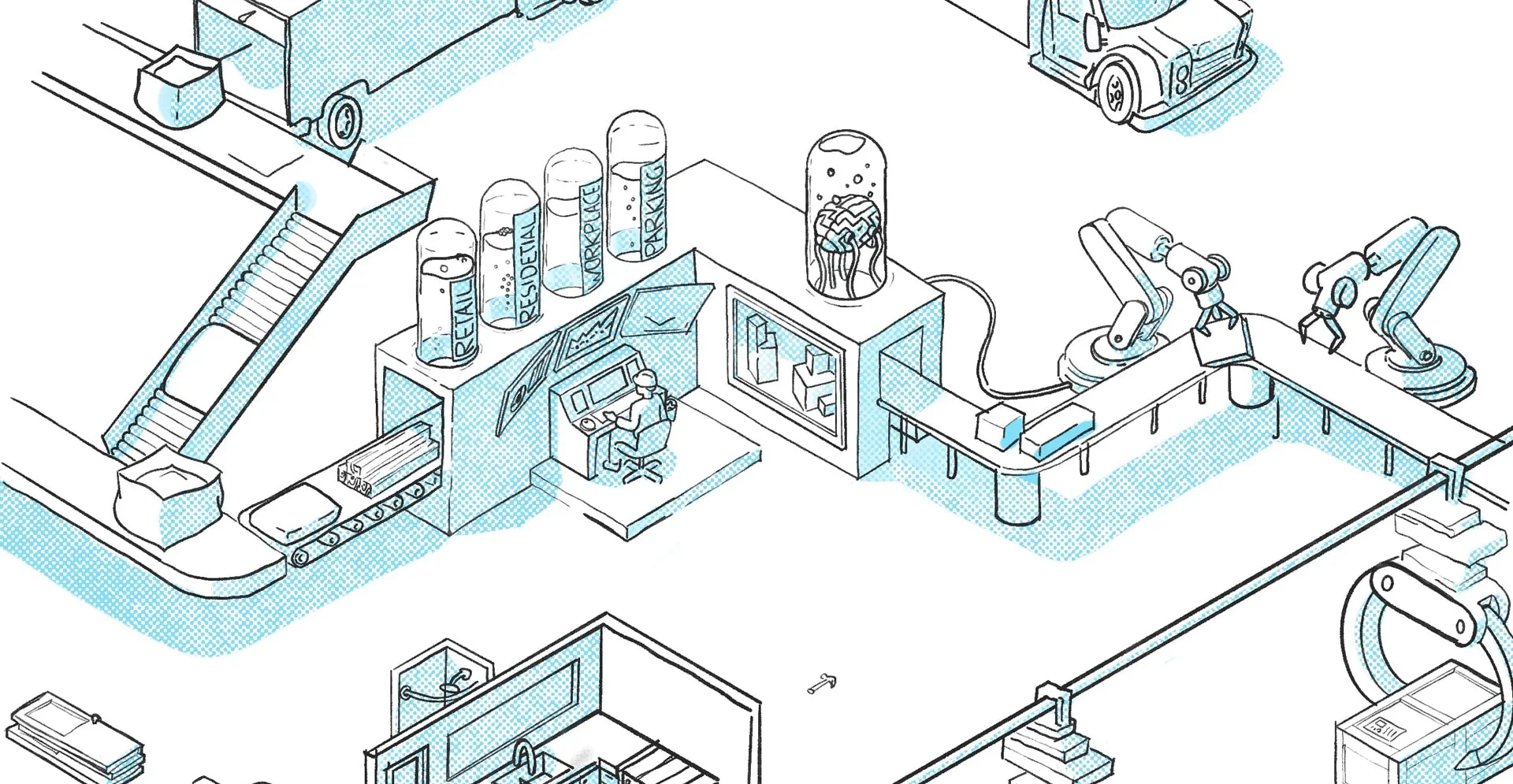How artificial intelligence can be a design partner, not a threat.
Over the last decade artificial intelligence (AI) has written a novel, drafted a screenplay, composed music, and created award-winning visual art. As AI becomes more common in the creative industries, it raises concerns about lost jobs, but also creates opportunities to delegate mundane and inefficient tasks to machines.
There are many recent studies which explore how AI can be used by architects to empower and streamline the design process. One inefficiency that is currently being tackled by AI is the manual drawing of layouts. When he was at Harvard in 2019, Stanislas Chaillou in his project ArchiGAN took a database of over 800 apartment plans to train a machine learning model how to layout rooms, as well as position doors, windows, and furniture when given an apartment footprint. He successfully scaled this to apply the same logic to apartment building design.
Users specify how each floor is divided into apartments and locate the entrances and circulation. This enables the model to propose individual apartment layouts, which are then reassembled to create the floor plate of the building.
While working at AHMM, the UK’s Oliver Green created Homegrown, an apartment layout recommendation tool which combines machine learning techniques with the firm’s library of completed residential designs. Today, architects use his tools to review suitable layouts against their building and reconstruct any apartment in Revit in seconds. Architext, launched by Theodoros Galanos and Tyler Lastovich last year, has a website that uses artificial intelligence to allow you to create apartment layouts by describing them in words.
AI is also helping architects create better and more sustainable designs. Autodesk Forma uses machine learning to help designers test their designs for sun, daylight, and noise at the start of the design process. Instead of having to wait for hours, days, or even weeks to get analysis results for our projects, AI computes this information within seconds. Designers receive the information they need faster, so that they can quickly iterate and reach the optimum solution.
These tools offer the potential for testing multiple design solutions quickly to get to an agreed aesthetic without painfully modeling each variation to get feedback. Text to image tools such as Midjourney and Dall-e, also based on machine learning and AI, have given us a practical example of how AI can help create unique masterpieces in seconds. In this process, the role of the designer has changed. Rather than producing the work ourselves, our job is to choose the right selection of prompts to achieve the desired aesthetic and outputs.
Most architects aspire to produce better places and spaces. How we design and deliver these projects is constantly evolving. Adopting new tools can be painful, but we cannot ignore the importance of change in the industry. AI and other emerging technologies will become a part of the way we design into the future, changing how we work for the better.







